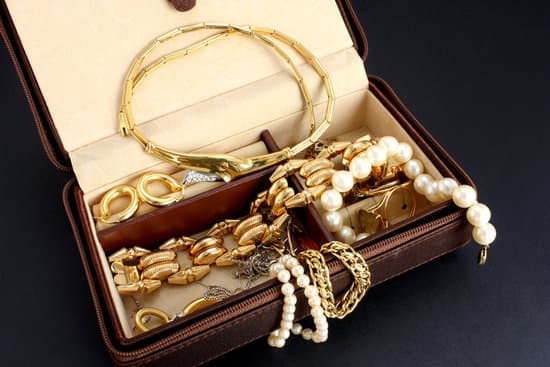The Hope Diamond, with its captivating blue hue and storied past, has long fascinated gem enthusiasts and history buffs alike. This legendary diamond has become a symbol of mystery, intrigue, and even a touch of curse. In this article, we dive deep into the world of the Hope Diamond, unraveling its remarkable journey from King Louis XIV to Harry Winston and exploring the generous donation that brought it to rest at the Smithsonian Institution.
For centuries, the Hope Diamond has mesmerized all who have beheld its brilliance. Believed to have been mined in India centuries ago, this spectacular gem’s origins are shrouded in mystery. Countless theories abound as to how it came to be cursed, adding an air of mystique to its already fabled reputation.
The history of the Hope Diamond is truly captivating. From being part of King Louis XIV’s extravagant collection in 17th-century France to finding itself in different hands across continents over the centuries, this diamond has seen it all. However, perhaps one of its most significant moments was when renowned jeweler Harry Winston acquired it and ultimately made the monumental decision to donate it for public display.
The History of the Hope Diamond
The history of the Hope Diamond spans centuries, beginning with its earliest known owner, King Louis XIV of France. Known as the Sun King, Louis XIV had a penchant for extravagant and luxurious possessions, and his jewelry collection was no exception. It is believed that the Hope Diamond was part of the French Blue diamond, which originated from India and was later cut into its renowned shape.
As time went on, the diamond exchanged hands multiple times, passing through aristocratic families and surviving turbulent periods such as the French Revolution and the Napoleonic era. One notable owner was Henry Philip Hope, an English banker who acquired the diamond in 1830. He added his name to the diamond’s legacy by renaming it “Hope”.
However, it was not until the 20th century that Harry Winston entered the picture and secured his place in this remarkable gemstone’s history. Winston purchased numerous important diamonds throughout his career to build his renowned collection. In 1949, he acquired the Hope Diamond from Evalyn Walsh McLean’s estate after her death.
Winston recognized the immense historical and cultural significance of this extraordinary gemstone. Despite its considerable value, he made the decision to donate it to the Smithsonian Institution in Washington D.C., where it could be admired by millions of visitors around the world. This generous gesture ensured that one of the world’s most famous diamonds would be publicly accessible for generations to come.
Through tracing its fascinating journey from its royal origins with King Louis XIV to its eventual donation by Harry Winston, we gain a deeper appreciation for not only the monetary value but also for the historical importance of this extraordinary gemstone. The history of ownership reflects both shifting tides in society as well as an enduring fascination with rare and precious jewels.
The Hope Diamond’s Donation
The donation of the Hope Diamond by Harry Winston to the Smithsonian Institution in Washington, D.C., was a generous gesture that significantly impacted the world of gem enthusiasts and museum visitors. There were various reasons behind Winston’s decision to donate such a valuable gem. Firstly, it showcased his commitment to promoting and preserving precious gems as historical artifacts rather than purely commercial commodities.
By donating the Hope Diamond, Winston also recognized the importance of making it accessible for public appreciation and education. The Smithsonian Institution is known for its role as a curator of national treasures, and housing the diamond in its National Museum of Natural History ensures that it will be preserved and displayed for generations to come. This act of generosity allows visitors from all walks of life to marvel at its beauty and learn about its rich history.
The significance of the donation extends beyond its philanthropic value. The Hope Diamond has become one of the most iconic diamonds in the world due to its mysterious origins and alleged curse. By donating it to the Smithsonian, Winston added an extra layer of intrigue and mystique to the diamond’s story. It has now become part of a captivating display that attracts countless visitors who are eager to witness one of history’s most famous gems.
Overall, Harry Winston’s decision to donate the Hope Diamond highlights his commitment not just to commerce but also to preserving history and sharing it with others. The impact of this generous gesture can be seen in how it continues to captivate audiences, inspire jewelry designers worldwide, and contribute to the legacy of this extraordinary gemstone.
The Smithsonian Institution
The Smithsonian Institution, located in Washington, D.C., has long been recognized as a curator of national treasures. Its mission to preserve and showcase cultural and scientific artifacts of significance is exemplified by its stewardship of the famous Hope Diamond. This section will shed light on the Smithsonian’s role in safeguarding this invaluable gem and discuss its efforts in preserving and displaying it for public appreciation.
Curating National Treasures
As one of the world’s largest museum complexes, the Smithsonian Institution houses an extensive collection representing various disciplines, including natural history, art, culture, and science. The National Museum of Natural History, where the Hope Diamond is housed, boasts a diverse range of specimens and exhibits that educate and engage visitors from around the globe.
One of the key responsibilities of the Smithsonian is to ensure that these national treasures are preserved for future generations. With regards to the Hope Diamond, meticulous care is taken to maintain its integrity and beauty. The diamond is stored in a specially designed protective case that provides optimal conditions to prevent damage or deterioration. Additionally, rigorous security measures guarantee its safety.
Showcasing the Hope Diamond
A visit to the National Museum of Natural History offers visitors an incredible opportunity to witness firsthand one of Earth’s most captivating gems. The exhibition featuring the Hope Diamond is carefully curated with attention to detail.
Displayed within an ornate setting that enhances its allure, the diamond takes center stage under specially designed lighting that accentuates its brilliant blue hue. Visitors can marvel at its exquisite craftsmanship while also learning about its history through informative displays and educational materials.
The significance of displaying such an iconic gem cannot be overstated. By showcasing the Hope Diamond, the Smithsonian allows individuals from all walks of life to appreciate its rarity and beauty while also bringing awareness to important aspects like gemology and history. This display serves as a reminder that jewelry can transcend mere adornment; it can also be a conduit for learning and cultural understanding.
Unveiling the Hope Diamond at the Smithsonian
The exhibition of the Hope Diamond at the Smithsonian Institution in Washington, D.C. is a truly captivating display that leaves visitors in awe. The careful curation and presentation of this legendary gem showcases its beauty and historical significance, making it a must-see attraction for jewelry enthusiasts and history buffs alike.
An Exquisite Setting
Stepping into the exhibit hall, visitors are greeted by an exquisite setting that enhances the allure of the Hope Diamond. Nestled within a specially crafted case, the diamond is surrounded by other precious gems and sparkling diamonds, emphasizing its unique blue color and showcasing its radiant brilliance.
The lighting in the exhibition hall is carefully calibrated to highlight every facet of the diamond, ensuring that it shimmers with an otherworldly glow. The contrast between the darkened room and the illuminated display creates a dramatic effect, further heightening the sense of mystery and intrigue surrounding this iconic gem.
A Symbol of Historical Significance
The unveiling of the Hope Diamond at the Smithsonian holds immense historical significance. As one of the world’s most famous gems, it represents not only exceptional beauty but also a storied past that spans centuries. Its presence in a national institution like the Smithsonian preserves and honors this heritage for future generations.
By showcasing such a renowned treasure, the Smithsonian reinforces its commitment to educating visitors about important cultural artifacts. The Hope Diamond serves as a tangible link to our past, providing insights into different periods of history, royal lineage, and various owners who cherished this extraordinary gem.
An Immersive Experience
Visiting the exhibition is an immersive experience that allows visitors to engage with history while marveling at one of nature’s greatest wonders. Audio guides provide informative narratives about each chapter in the diamond’s journey through time. Visitors can also explore interactive displays that offer additional context on jewelry design, gemology, and the science behind diamonds.
The exhibition of the Hope Diamond at the Smithsonian goes beyond displaying a beautiful gem; it brings history to life and immerses visitors in a captivating narrative. The allure of this magnificent diamond continues to draw crowds year after year, enchanting all who have the opportunity to witness its splendor firsthand.
The Hope Diamond’s Influence on Jewelry Design
The Hope Diamond, with its unique blue color and immense size, has undeniably influenced jewelry design trends throughout history. This section will explore the enduring influence of the Hope Diamond on jewelry design, showcasing notable pieces that have drawn inspiration from this legendary gem.
Designers worldwide have been captivated by the allure of the Hope Diamond, incorporating elements of its mesmerizing blue hue and exquisite detailing into their creations. One notable example is a stunning necklace created by renowned jeweler Harry Winston. This necklace features a large, pear-shaped blue diamond surrounded by smaller white diamonds, echoing the iconic silhouette of the Hope Diamond itself.
Another piece inspired by the Hope Diamond is a striking cocktail ring crafted by a contemporary designer. The ring showcases an oval-shaped blue sapphire set in a halo of delicately arranged white diamonds, reminiscent of the captivating elegance of the Hope Diamond’s setting. With its vibrant blue color and intricate craftsmanship, this ring pays homage to the timeless beauty of the renowned gem.
In addition to these individual pieces of jewelry, numerous fashion houses and jewelry brands have drawn inspiration from the Hope Diamond when creating their collections. Whether it be through using sapphires or other blue gemstones in their designs or incorporating intricate patterns reminiscent of the diamond’s unique facets and shape, designers continue to pay tribute to its remarkable impact on jewelry aesthetics.
The influence of the Hope Diamond on jewelry design extends beyond specific pieces and collections; it has shaped industry trends as well. The popularity of colored gemstones in engagement rings and statement jewelry can be attributed in part to the legacy left behind by this captivating gem. Designers and consumers alike are continually drawn to the rarity and allure that gems like sapphires and aquamarines possess-a phenomenon undoubtedly sparked by fascination with extraordinary stones like the Hope Diamond.
Overall, the influence of the Hope Diamond on jewelry design cannot be understated. Its striking blue color, mesmerizing size, and rich history continue to inspire designers around the world. From notable necklaces to contemporary cocktail rings, its enduring legacy can be seen in countless pieces that pay homage to its timeless beauty.
| Jewelry Piece | Description |
|---|---|
| Harry Winston Necklace | A large pear-shaped blue diamond surrounded by smaller white diamonds, echoing the silhouette of the Hope Diamond. |
| Contemporary Cocktail Ring | An oval-shaped blue sapphire set in a halo of delicate white diamonds, paying homage to the elegance of the Hope Diamond. |
The Hope Diamond’s Mystique
The Hope Diamond, with its captivating beauty and legendary status, has been steeped in mystery and intrigue for centuries. This section aims to address the myths and legends surrounding the diamond, including the alleged curse, and separate fact from fiction. Through scientific research and analysis, experts have sought to demystify the supposed curse and shed light on the true nature of this remarkable gem.
One of the most enduring legends surrounding the Hope Diamond is its supposed curse, which is believed to bring misfortune and tragedy to its owners. However, it is essential to note that there is little concrete evidence to support this notion. Many of the tragedies associated with the diamond can be explained by historical events or personal circumstances rather than any supernatural intervention.
Scientific research conducted on the Hope Diamond has helped debunk some of these misconceptions. For example, some people believe that the diamond glows an eerie red color when danger is imminent. In reality, this phenomenon known as phosphorescence is a natural property of some diamonds when exposed to ultraviolet light. Similarly, claims of mysterious deaths associated with the diamond have been attributed to exaggeration or coincidence rather than any intrinsic power possessed by the gem itself.
Addressing these myths allows us to appreciate the true beauty and historical significance of the Hope Diamond without being overshadowed by unfounded superstitions. By exploring the facts behind its mystique, we gain a deeper understanding of this remarkable gem’s journey through history and its place as one of the world’s most cherished treasures.
| Fact | Fiction |
|---|---|
| The diamond glows red when danger is imminent. | This phenomenon known as phosphorescence occurs naturally in some diamonds. |
| The diamond brings misfortune and tragedy to its owners. | There is little concrete evidence to support the alleged curse. |
| Mysterious deaths are associated with the diamond. | Coincidence and historical events often explain tragedies attributed to the diamond. |
Conclusion
In conclusion, the Hope Diamond continues to captivate and enchant jewelry enthusiasts around the world. Its journey from the extravagant collection of King Louis XIV to the generous donation by Harry Winston has solidified its place in history as one of the most iconic gems of all time.
The decision to donate such a valuable gem to the Smithsonian Institution in Washington, D.C., speaks volumes about both Harry Winston’s generosity and his desire to ensure that this legendary diamond is preserved for future generations.
The Smithsonian Institution plays a crucial role in maintaining and showcasing national treasures, and their efforts in preserving and displaying the Hope Diamond are commendable. The National Museum of Natural History offers visitors a chance to marvel at the beauty and historical significance of this remarkable gem. Its intricate setting and captivating display create an unforgettable experience for all who have the privilege of viewing it.
Furthermore, the influence of the Hope Diamond on jewelry design cannot be overstated. Its unique blue color and large size have inspired countless designers to create stunning pieces that attempt to capture its essence. From delicate necklaces to grand tiaras, jewelry inspired by the Hope Diamond continues to grace red carpets and boutiques worldwide.
Frequently Asked Questions
Which jeweler donated the Hope Diamond to the Smithsonian?
The jeweler who donated the Hope Diamond to the Smithsonian is Harry Winston. In 1958, he generously gifted this famous blue diamond to the museum.
Considered one of the world’s most renowned jewelers, Winston recognized the importance of sharing this extraordinary gem with the public. His decision to donate the Hope Diamond allowed countless visitors to marvel at its beauty and learn about its fascinating history.
Who donated the Hope Diamond?
Before becoming part of the Smithsonian collection, the Hope Diamond had several owners. It was Pierre Cartier, a prominent French jeweler, who sold the diamond to Evalyn Walsh McLean in 1911.
However, it was ultimately Harry Winston who donated it to the Smithsonian nearly five decades later. His donation aimed to honor Pierre Cartier’s legacy as well as contribute to preserving this iconic gem for future generations.
How did Cartier get the Hope Diamond?
Cartier became involved with the Hope Diamond when Evalyn Walsh McLean, an American socialite and collector of extravagant jewelry, bought it from them in 1911. At that time, Pierre Cartier was actively expanding his business in New York City and saw an opportunity to add another prestigious gem to his clientele’s collection.
He successfully negotiated with McLean and sold her multiple pieces of jewelry along with the infamous blue diamond. Through this transaction, Cartier acquired ownership of the Hope Diamond and helped shape its fascinating story before passing it on through subsequent sales and eventually ending up at the Smithsonian Institution.

Welcome to my jewelry blog! My name is Sarah and I am the owner of this blog.
I love making jewelry and sharing my creations with others.
So whether you’re someone who loves wearing jewelry yourself or simply enjoys learning about it, be sure to check out my blog for insightful posts on everything related to this exciting topic!





